Machines of former allies
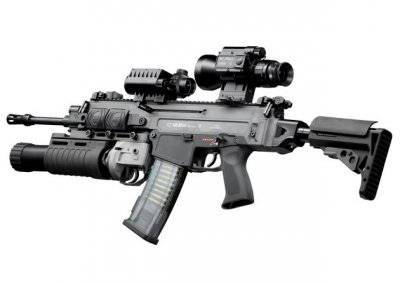 It’s worth starting, perhaps, with the Czech Republic, since quite recently the designers of this country have managed to prove again to everyone that they are among the best and have not lost their knack for creating the best weapon in the world. When was the last time the question of rearming the Czech army to the place of the new machine claimed the best models of weapons created in Europe and the United States, but the competitive test of weapons had a completely different goal than the choice of a new machine. During the tests, the main shortcomings of the best of the samples of modern machines were identified, and taking into account the information received, the designers started to create their own sample of the machine.
It’s worth starting, perhaps, with the Czech Republic, since quite recently the designers of this country have managed to prove again to everyone that they are among the best and have not lost their knack for creating the best weapon in the world. When was the last time the question of rearming the Czech army to the place of the new machine claimed the best models of weapons created in Europe and the United States, but the competitive test of weapons had a completely different goal than the choice of a new machine. During the tests, the main shortcomings of the best of the samples of modern machines were identified, and taking into account the information received, the designers started to create their own sample of the machine.Work on the weapon was completed surprisingly quickly. It is difficult to name the exact reason why the designers managed to create in a record short time a sample of a weapon that surpasses in its characteristics both SCAR and FN416 and other promising at the moment. Most likely, the thing is that the country has long had an excellent base and a school of gunsmiths, and therefore did not make a problem in the shortest possible time to create a sample that fully complied with the new requirements. The name of the new machine CZ805, now this weapon is actively replacing other samples in the army of the Czech Republic.
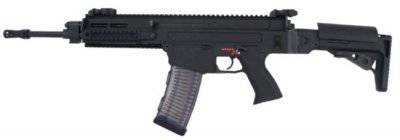 The main feature of the machine is not that, due to barrels of various lengths, the weapon changes its purpose, but that the machine initially had the ability to instantly change the used ammunition. Of course, it is not difficult to do in any other sample of weapons, but it is not often possible to find an automaton in which this possibility was originally laid when designing weapons. The machine is built according to the scheme of automation with removal of powder gases from the barrel, the barrel is locked when the shutter is turned. The trigger mechanism allows automatic firing of a single, with a cut-off of three rounds and automatic. The most important feature of the weapon is its full bilateralism. The switch of the safety and fire modes is located immediately above the trigger on both sides of the weapon. The shutter handle can be rearranged from the right side to the left, the ejection of the spent cartridges can also be reconfigured to the side convenient for the shooter. Unfortunately, it’s impossible to say that this weapon can boast with a well-thought-out system of quick hand changes. Still, the same switch of ejection of spent cartridges takes time, and sometimes it may not be time.
The main feature of the machine is not that, due to barrels of various lengths, the weapon changes its purpose, but that the machine initially had the ability to instantly change the used ammunition. Of course, it is not difficult to do in any other sample of weapons, but it is not often possible to find an automaton in which this possibility was originally laid when designing weapons. The machine is built according to the scheme of automation with removal of powder gases from the barrel, the barrel is locked when the shutter is turned. The trigger mechanism allows automatic firing of a single, with a cut-off of three rounds and automatic. The most important feature of the weapon is its full bilateralism. The switch of the safety and fire modes is located immediately above the trigger on both sides of the weapon. The shutter handle can be rearranged from the right side to the left, the ejection of the spent cartridges can also be reconfigured to the side convenient for the shooter. Unfortunately, it’s impossible to say that this weapon can boast with a well-thought-out system of quick hand changes. Still, the same switch of ejection of spent cartridges takes time, and sometimes it may not be time. At the moment, CZ 805 can be considered the main weapon of the army of the Czech Republic. We will not dwell on this weapon in more detail, since relatively recently there was prepared material.
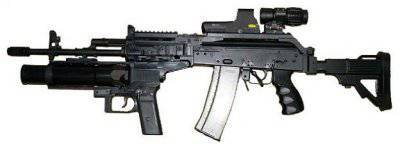 Poland, unlike the Czechs, took the path more simple and did not create weapons completely from scratch, limiting herself to creating her own line of development of a Kalashnikov assault rifle. Although the word restricting is probably not entirely appropriate, since, as a result of their own variant of AK development, they managed to create a truly unique pattern, in which, although the roots of the famous automaton are visible, this is a somewhat different, not quite familiar weapon.
Poland, unlike the Czechs, took the path more simple and did not create weapons completely from scratch, limiting herself to creating her own line of development of a Kalashnikov assault rifle. Although the word restricting is probably not entirely appropriate, since, as a result of their own variant of AK development, they managed to create a truly unique pattern, in which, although the roots of the famous automaton are visible, this is a somewhat different, not quite familiar weapon.At the moment the machine gun is named Beryl and is the main weapon of the Polish army. Of the remarkable features of this automaton is the combination of AK with individual elements M4, but at the same time the weapon looks quite harmonious and does not look like a mixture of a bulldog with a rhinoceros. As a result of adaptation for the 5,56x45 cartridge, the weapon received slightly different characteristics than the Kalashnikov assault rifle. In addition, despite the preservation of the main components of the AK, this machine was able to fire with a cut-off 3 cartridge, which also affected its effectiveness. However, this possibility was introduced by the Poles in their later versions of the Kalashnikov, so it’s impossible to distinguish it as an innovation.
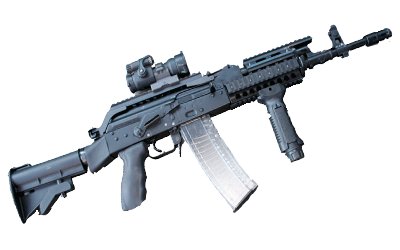 The weapon received several attachment strips for additional devices. Picatinny-type attachment plates allow the rifle to be equipped with a grenade launcher, an optical or night-sight, and so on. The machine has 4 versions that differ in barrel length, one of which is intended for sports use and is deprived of the possibility of automatic fire.
The weapon received several attachment strips for additional devices. Picatinny-type attachment plates allow the rifle to be equipped with a grenade launcher, an optical or night-sight, and so on. The machine has 4 versions that differ in barrel length, one of which is intended for sports use and is deprived of the possibility of automatic fire.This weapon has become the most widespread in the Polish army, but lately Polish gunsmiths have come close to the question of creating their own set of “soldier of the future”, which includes Beryl, but it is planned to replace it with another, more effective sample. It is not yet known for certain what kind of weapon it will be, but some individuals have let it go, that work is being done not only in the direction of the weapon itself, but also of the ammunition, moreover, of an ammunition-less ammunition. The Poles are counting on such ammunition and plans to make it the main NATO patron, but, in my opinion, such plans will never be realized, since too many weapons will have to be replaced with new samples, except that the Polish sleeveless ammunition will be compatible with weapons under 5,56х45, very doubtful. In addition, we should not forget that the introduction of such a cartridge in NATO is a lot of money, which, naturally, no one has the desire to give. In general, no matter how brightly the prospects of creating a new weapon and a new cartridge look, all these are just plans and most likely they will remain as such, just as the Beryl machine gun will remain in service with the Polish army for a long time. More information about the weapons and how the Kalashnikov assault rifle developed in Poland can be found here. this article.
In addition to the Beryl machine gun, other samples can be found in the Polish army, but the old G36, HK416 and SCAR are not of Polish origin. All this is present in very small quantities in the Polish army. Naturally, this weapon is not massive, it is in service in very small quantities and far from everywhere, so you should not take it into account.
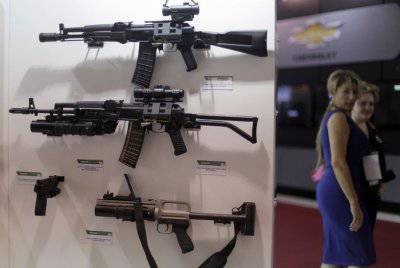 Romania, Bulgaria, Hungary are content with their own Kalashnikov assault rifles, and not everywhere they are “sharpened” under the patron of 5,56х45. So, for example, in Bulgaria, almost all samples under 5,56 are duplicated in the caliber 7,62, under the domestic ammunition 7,62х39. In addition to these samples, European and American weapons are being actively purchased, which takes large sums from the countries' budget or makes them get into huge loans. In general, they try to resort to the purchase of foreign weapons extremely rarely, improving and expanding the capabilities of their machines, and constantly working on the creation of new models, but so far without success.
Romania, Bulgaria, Hungary are content with their own Kalashnikov assault rifles, and not everywhere they are “sharpened” under the patron of 5,56х45. So, for example, in Bulgaria, almost all samples under 5,56 are duplicated in the caliber 7,62, under the domestic ammunition 7,62х39. In addition to these samples, European and American weapons are being actively purchased, which takes large sums from the countries' budget or makes them get into huge loans. In general, they try to resort to the purchase of foreign weapons extremely rarely, improving and expanding the capabilities of their machines, and constantly working on the creation of new models, but so far without success.Summarizing everything written above, I would like to separately note the fact that the Kalashnikov assault rifle found use in NATO countries. Naturally, it is not suitable for individual tasks, but as a cheap and at the same time reliable model for mass weapons is an ideal weapon, albeit someone else’s production and for someone else’s cartridge.
Information